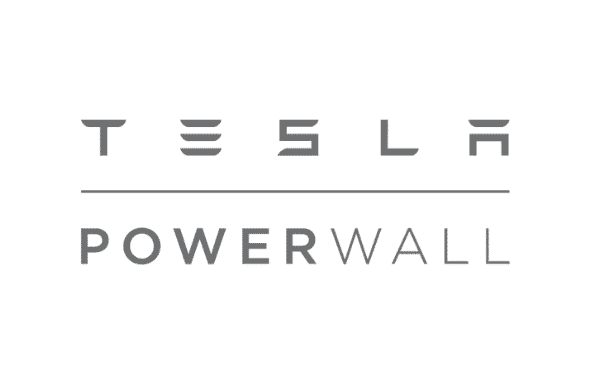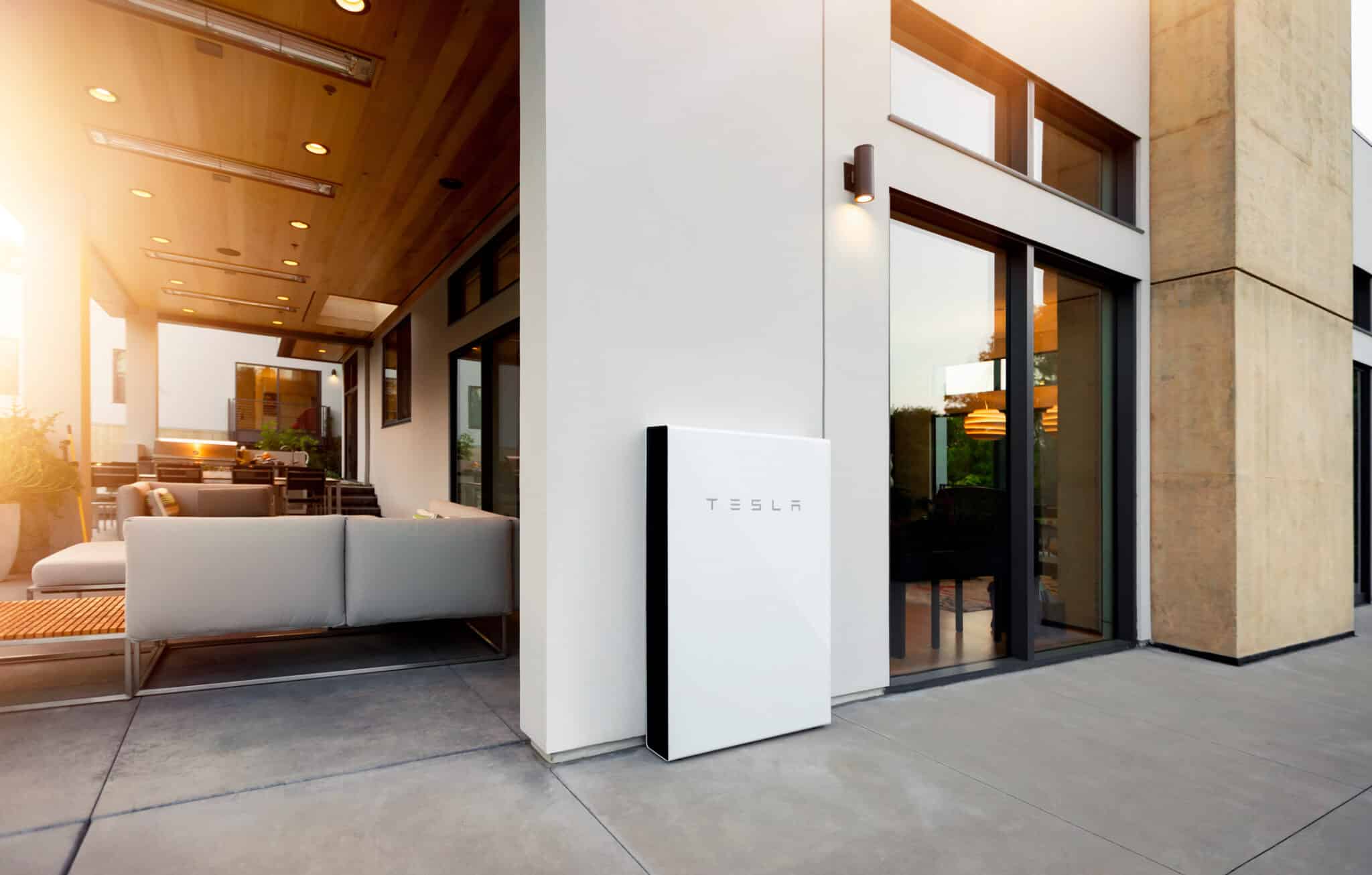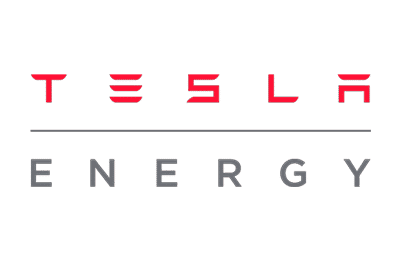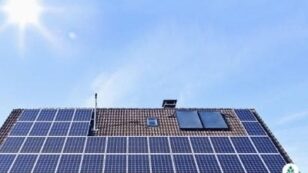

How Much Does the Tesla Powerwall Cost? (2024 Review Guide)
In this guide, you’ll learn:
- How much does a Tesla Powerwall cost?
- Do you need Tesla solar panels to use a Powerwall?
- How much more capacity does it have than competitor batteries?
Each product and or company featured here has been independently selected by the writer. You can learn more about our review methodology here. If you make a purchase using the links included, we may earn commission.

The Ecowatch team has thoroughly reviewed each model of the Powerwall to determine if the features are worth the price. You can use this Tesla Powerwall cost guide to help you decide if this system is right for your home.
Key Takeaways
- A single Tesla Powerwall costs $11,500, but the cost per unit can be as low as $8,950 depending on the number of units you need.
- Since the Powerwall has become very popular, there are often long wait times to get products in after ordering them.
- If you want to add a Powerwall to an existing solar power system, or you want to use solar panels and inverters from another manufacturer, you will need to contact a third-party provider.

Tesla Energy

Nationwide Service
Average cost
Pros
- Price-match guarantee
- Sleek, efficient and durable solar panels
- Best solar battery on the market
Cons
- Some reported issues with customer service
- Customer service varies by local dealer
How Much Does the Tesla Powerwall Cost?
A Tesla Powerwall is more expensive than many other solar battery systems, but with that price point comes higher storage capacity and more power output. Most homeowners pay around $11,500 for a Powerwall, but exact prices vary based on how many units you purchase and where you purchase from.
We’ll explain more below, but homeowners typically find that they end up paying more when they purchase directly from Tesla rather than from a local third-party certified Powerwall installer.
Cost aside, the value that a Tesla Powerwall offers is really where it shines. When we compare Tesla’s solar battery with two of its biggest rivals, Generac and Enphase, you can really see why so many homeowners are opting for Powerwalls.
When it boasts a cost per kWh that is 30% lower than its next closest competitor, even we struggle to consider other brands for our solar battery needs.
| Model | Avg Cost of 1 Unit | Capacity | Cost per kWh |
| Powerwall | $11,500 | 13.5 kWh | $851 |
| Generac | $15,000 | 17.1 kWh | $877 |
| Enphase | $20,000 | 10.08 kWh | $2,000 |
Now that you understand the basics of Tesla Powerwall pricing, continue reading to see how prices vary so that you can find the best deal for what you need.
Powerwall Pricing with a Tesla Solar System
It’s common to buy both solar panels and the Powerwall at the same time since you will likely save money on labor costs. If you are buying a solar panel system and Powerwall at the same time, you can expect the cost to be around the following price points before the federal solar tax credit is applied:
- 4.8 kW solar panel system + Powerwall: $27,484
- 9.6 kW solar panel system + Powerwall: $43,468
- 16.3 kW solar panel system + Powerwall: $65,779
- 19.2 kW solar panel system + Powerwall: $75,436
If you want to buy just the Powerwall and not Tesla solar panels, your option is to use a third-party installer. It’s more expensive to go through a third-party installer (often between $13,000 and $15,000 for a single Powerwall), but many homeowners prefer this route for the quality of installation and good customer service provided by local solar installation companies.
A single Tesla Powerwall costs $11,500, but the cost per battery decreases as you buy more at one time. You can combine a total of nine Powerwalls together to power your home, and the more you buy, the more you’ll save. For example, if you need four Powerwalls for complete energy independence, you’ll pay just $9,550 for each unit and save a total of $7,800.
An average household uses at least 32 kWh of energy every day. So if you plan to rely entirely on your Powerwall during an extended power outage, you’ll probably need at least three of these batteries (40.5 kWh) for storage. If this is your goal, consider buying your Powerwalls in bulk, as this will result in the greatest possible cost savings.
Powerwall Pricing with Local installers
If you don’t want to order your Powerwall directly from Tesla, you can contact a third-party installer to do the work for you. If you hire a third-party installer, expect to pay between $13,000 and $15,000 to install a Powerwall. This cost includes the Powerwall and its installation.
Since the Powerwall is in such high demand, you’ll have to wait for your battery either way, but you’ll likely wait longer if you hire a local installer instead of going through Tesla’s website. Still, it’s worth it because your installer will take care of ordering the units and installing them for you. When you use a local installer, you’ll also have a local contact should you need someone to do repairs or perform maintenance on your Powerwall. These local connections are why we recommend this method.
Ready to get started on your Powerwall system? Use the button below to get connected with a certified installer in your area.
Does the Tesla Powerwall Have Any Incentives or Rebates?
Powerwalls and other battery systems qualify for the 30% federal solar tax credit, which effectively reduces the price of a single unit to $8,050 (down from $11,500). However, you must meet some requirements to be eligible:
- The Powerwall must be used with solar panels (or another renewable energy system) to qualify for credit. In other words, a stand-alone unit that only pulls charge from the grid does not meet the credit requirements. .
- If you’re using the Powerwall in a home, it must get 100% of its charge from solar panels.
- If you’re using it in a business, it must get at least 75% of its charge from solar panels.
Depending on where you live, there may be additional solar tax exemptions or other financial incentives from your state government or utility company. Before installing a Tesla Powerwall, look for information about local incentives and their eligibility requirements.
What Are Other Ways to Save Money With the Tesla Powerwall?
The total cost of Tesla Powerwalls may be expensive upfront, but they are worth the cost due to higher battery capacity and a longer lifespan. If you have solar panels installed and want energy independence, the Powerwall will help you get there as the system stores any excess energy the panels produce.
To save the most money on your Tesla Powerwall, make sure to follow these tips:
- Use third-party installers: It may not always be the case, but you could save money by using a local certified installer. The cost of solar differs depending on your location, so get a few quotes before you choose your preferred installer.
- Buy more than one Powerwall: There is a good chance that you’ll need more than one Powerwall to power your entire home, so buy all of your Powerwalls together instead of one at a time. If you need three Powerwall batteries, for instance, you could save $5,850 if you buy them all at once.
- Use local and federal incentives: You can save thousands of dollars on your Powerwall if you take advantage of the tax incentives. For example, you can save about $3,450 with the federal solar tax credit.
- Calculate your energy savings: If you are on the fence about the Powerwall, calculate your potential savings. Not only does the Powerwall store excess energy, but its smart technology can save you even more money each month – we’ll explore this technology in detail later.
How Long Until You Will See An ROI On Your Tesla Powerwall?
Your Powerwall will help you save money on your monthly energy bills, and will pay for itself in a matter of years. The average solar panel payback period is eight to 12 years, but it takes some homeowners up to 15 years to see a full ROI. The return on investment (ROI) of your Powerwall depends on several factors, such as your location, energy costs, net metering ability, and exposure to sunshine.
You may see a quicker return on your investment if you live in an area with any of the following:
- Abundance of sunshine: The more full sun you have exposure to, the more solar energy you can convert. When you are able to convert more sunlight into energy, you’ll be able to power your home appliances and store energy at the same time.
- High energy costs: If you live in a state that has high energy costs, then you’ll save more money with solar energy. The less you can rely on the grid for energy, the more you’ll save.
- Net metering ability: If your utility company allows net metering, you can transfer excess energy to the grid as credits to be used later.
Watch the video below to see how much money one family saved with the Tesla Powerwall:
What is the Tesla Powerwall?
Made by the same company that is famous for electric vehicles (EVs), the Tesla Powerwall is a lithium-ion battery that’s most often associated with stored energy generated by Tesla solar panels.
You can currently purchase a Tesla Powerwall 2 or Powerwall+. The Powerwall 1 has been discontinued since 2016, but the newer versions are much better products: a single Powerwall 2 or Powerwall+ can store 13.5 kilowatt-hours of power, while the Powerwall 1 only had 6.4 kWh of usable capacity. Further, the Powerwall 3 is expected to make its debut in 2024, so we are excited to see how this newest model compares to its older counterparts.
The newer versions also have a higher power output (5.6 kW vs 3.3 kW), which means they can provide electricity for more devices at once. You can connect up to 10 Powerwall units as a single energy storage system, making them a viable energy storage solution for small and medium businesses as well as homes.
Tesla Powerwall 2
The Tesla Powerwall 2 is different from the first generation in that it has a sleeker design, easier to install, and more user-friendly. This system has up to 5.8 kW of continuous power and up to 7 kW of peak power. This is enough to power most appliances in your home, but if you want larger systems – like your air conditioning – to run on solar, you may need more than one Powerwall.
If you already have a home energy system with its own solar inverter, the Powerwall 2 is a great option to add energy storage without modifications. However, the Powerwall+ is easier to install with new solar panels, since there is no need to add a separate inverter.
Tesla Powerwall+
The main difference between the Powerwall and Powerwall+ is that the Plus boasts a higher power rating of 5.8 kW continuous and 7.6 kW peak power. This power output can support several appliances within your home.
The Powerwall 2 and Powerwall+ have the same battery storage capacity of 13.5 kWh, but the Powerwall+ includes an inverter for easier integration with solar PV panels. The Powerwall+ can also deliver more kilowatts when panels are in full sunshine, while the Powerwall 2 offers the same output regardless of solar generation.
Tesla Powerwall 3
Tesla Powerwall 3 was supposed to be launched in the spring of 2022, but it was postponed and has not yet been released. There are rumors that Powerwall 3 will be launched in 2024, but currently there is no firm date.
We don’t have exact Powerwall 3 specifications since the product has yet to enter the market, but there are some features that we may see in Tesla’s upcoming model:
- Built-in inverter so you don’t have to purchase a separate one.
- Improved energy management.
- Larger battery capacity.
- Optimization for Tesla solar roofs and vehicles.
Who is the Tesla Powerwall For?
With a cost of $11,500 per unit, there’s no denying that a Tesla Powerwall is quite the investment. Although it can be a good idea for any current or future solar panel owner, there are some people who will benefit from a Powerwall more than others. If you fall into any of the following categories, then a Powerwall will likely be a good investment.
- Anyone who currently has solar panels but generates excess energy. If you live in an area that gets a lot of sunshine and your solar panels produce more than your home can use, then you should consider a Powerwall. The Powerwall will store excess energy so that it can be used at night or during a power outage.
- Anyone with expensive energy costs. Tesla Powerwall can monitor the cost of energy and only use its power when energy is at its most expensive. This Time-Based Control mode is based on the settings you set, so you’ll be able to actively lower your monthly energy bills.
- Anyone who lives in an area with severe weather. Extreme weather often leads to power outages. You can avoid the inconvenience of having no power with a Powerwall because this system will store enough energy to keep the majority of your home systems and appliances running.
Pros and Cons of the Powerwall
Pros:
- More kW capacity than other leading batteries: Compared to other solar batteries, the Tesla Powerwall has much more energy capacity. The Powerwall has a capacity of 13.5 kWh, whereas other batteries have 10 kWh or less.
- Long 20-year lifespan: Many solar batteries have a lifespan of five to 15 years, but the Powerwall can last up to 20 years or more with proper maintenance.
- Can be used with any brand of solar panel: Powerwalls are compatible with any of the best solar panel brands, so you don’t need to buy expensive Tesla panels.
- Sleek, efficient, and durable: Many batteries are bulky and don’t add anything to curb appeal, but the Tesla Powerwall looks as good as it operates.
Cons:
- Long wait times because manufacturers cannot keep up with production: There is a long wait for Powerwall systems. Many homeowners have up to a year to get their Powerwall installed.
- Single Powerwalls can’t support all home systems and appliances: One Powerwall is enough to power most of your home systems and appliances, but it may not be enough to charge your electric vehicle and power your air conditioning system. You may need to buy two or more Powerwall battery systems to meet your energy needs.
- Expensive investment upfront: Tesla Powerwalls may not be the most expensive solar battery, but they’re still not cheap. You will need to spend $11,500 or more upfront to get your Powerwall installed.
If the Powerwall sounds like it is a good solution for your home’s needs, click the button below to see how much you can save.
How Do Tesla Powerwall Batteries Work?
All batteries store DC (direct current) power, and solar panels produce DC power. But home appliances use AC (alternating current) power. This is where inverters and rectifiers come into play.
When solar panels produce DC power, it runs through an inverter, where it’s converted to AC, then flows through your house. If you have a backup power system, excess energy that’s not used in the home will keep flowing to charge your battery. It will need to run through a rectifier to be converted back to DC power in order to be stored in the battery.
The Powerwall 2 and Powerwall+ both have an internal inverter and rectifier to convert electricity between AC and DC. The inverter in the Powerwall 2 is only for the battery, and an external inverter is required for solar panels. On the other hand, the Powerwall+ includes a solar inverter. Both models can also charge from the grid when solar panels are not producing electricity.
Here’s a quick overview of how it works:
The solar energy stored in a Tesla Powerwall can be used at any time. However, there are certain times of the day when stored electricity is more valuable. For example, many electricity providers charge expensive peak tariffs after sunset, when homes tend to use more power. By pulling from your Powerwall instead of the grid at this time of the day, you can maximize your electricity savings.
The number of solar panels needed to fully charge a Tesla Powerwall will depend on how much sunshine you get. Consider that the Powerwall has a 90% round-trip efficiency when charging and discharging — to get the usable energy capacity of 13.5 kWh, you must have 15 kWh available from your solar panels.
Here’s how that breaks down in a typical solar panel system:
- Assuming a solar panel capacity of 330 to 360 watts, you will need around 10 to 14 panels to generate 15 kWh of usable energy per day.
- The exact number of solar panels needed to charge a Tesla Powerwall will depend on the specific model and local sunshine conditions.
Keep in mind that your home uses some solar electricity during the day, while the Powerwall is charging. You must have enough solar panels to cover your daytime consumption and charge the battery as well.
Operating Modes of a Powerwall
Tesla Powerwall has three main operating modes: Backup Reserve, Self-Powered and Time-Based Control. If you own a Powerwall, odds are you will use each of these modes to some extent. Learn more about what each mode does in the sections to follow.
Backup Reserve Mode
Backup Reserve Mode is specially designed to provide your home with power in case of a power outage. You can set this mode between 0% and 100% depending on your energy goals. However, Tesla recommends setting this value higher than 20%, as a lower value will not provide enough energy to power your home with backup energy in the event of a prolonged power outage.
Note that 100% Backup Reserve will not save you money on your energy bills. Instead, it will only store energy to be used when you have a power outage. Unless you still want to rely on the energy grid, you should lower this percentage to only what you’d need to power your home in an energy emergency.
Self-Powered Mode
The Self-Powered mode is a popular choice for those who live in areas that get an abundance of sunlight, as the Powerwall stores any solar energy that is not used to power your home during the day. This stored energy is then used at night when you do not have access to sunlight, which means you can use more solar energy in a 24-hour period.
Time-Based Control Mode
If you live in a state where energy costs fluctuate greatly throughout the day, the Time-Based Control mode is the best choice for you. Instead of just storing energy for the night, your Powerwall discharges energy when energy costs are highest in your area. When energy costs are lower, the Powerwall charges and your home uses the energy supplied by the grid.
Advanced Settings
Along with the three main settings listed above, there are some additional and advanced settings you should be aware of as a Tesla Powerwall owner. These settings will help you run your Powerwall to its full potential and include the following features:
- Energy exports: If you live in an area where you can send power back to the grid during peak sunshine hours, your Powerwall can take care of this transaction.
- Grid-charging: If you enable grid charging, your Powerwall can charge from the energy grid. You may use this setting to charge your Powerwall if there are times when there is not enough sunlight to maintain your desired backup energy amount.
- Preconditioning: Preconditioning is a built-in save-guard that counteracts reduced charging ability due to freezing temperatures. When the temperature outside reaches below freezing, your Powerwall will heat up to improve its operation.
- Self-consumption only: Sef-consumption mode will only produce enough energy to power your home and charge your Powerwall. No energy will be discharged to the power grid.
Components of a Tesla Powerwall System
The Powerwall+ comes with its own inverter and has four main components that you should become familiar with if you choose this solar battery:
- Backup switch: The back up switch is designed to backup your home power when your system detects a power outage.
- Gateway meter: The gateway meter contains two internal meters that monitor energy loads.
- Tesla gateway: This gateway controls the connection between your Powerwall system and the energy grid.
- Tesla solar shutdown: This device is responsible for preventing rapid inverter shutdown. It’s required by the National Electric Code for safety reasons.
Additional Powerwall Specs
The Tesla Powerwall has some of the best specifications in the home battery market. There are many Powerwall alternatives with excellent performance, but this version is among the top products in terms of battery capacity and power output. There are a few differences between the two Powerwall models, check them out in the table below.
Depth of Discharge
The depth of discharge (DoD) is essentially the percentage of a battery that can be completely emptied. In Tesla’s case, this would mean that 100% of the battery would be discharged. 100% DoD seems to be the standard across other leading batteries, but some batteries – such as Generac PWRcell – have a DoD in the 80% range.
Round Trip Efficiency
Round-trip efficiency measures the amount of battery power that is drawn, not the amount of power needed to run the battery. The average solar battery has an efficiency of 80%, putting Tesla Powerwall’s 90% ahead of other leading solar batteries.
Control Powerwall with Tesla App
The mobile Tesla app helps you manage all your Tesla products, including the Powerwall. With the Tesla app, you can monitor your energy usage, customize your Powerwall Self-Consumption and Time-Based Control settings, and set up your backup reserve for grid outages.
You can also set your Powerwal to Storm Watch mode, which will allow your Powerwall to watch for upcoming extreme weather events that could result in a power outage. If your Powerwall detects such a storm, it will store more power in preparation.
Tesla Powerwall Lifespan & Warranty
The Tesla Powerwall comes with a complete 10-year warranty that has 70% minimum retained capacity for the solar self-use and backup use functions, which is on par with the industry average. This means that over its lifespan, your Powerwall should be covered for an AC output of 37.80 MWh.
Keep in mind that your Powerwall must be connected to the internet so that it can receive necessary firmware updates from Tesla. If you don’t connect your Powerwall to a stable internet connection or if that connection is disrupted for extended periods of time, your warranty may be limited to only four years.
Now, the average lifespan of a Powerwall is 20 years, so the warranty only covers half of the total expected lifespan of your Tesla system. However, this lifespan blows nearly every other solar battery out of the water because many have a lifespan of up to 15 years.
Compare Tesla Powerwall vs Other Solar Batteries
Without a doubt, the Tesla Powerwall is ahead of the competition in terms of market share, and Tesla Powerwall reviews from customers consistently give the batteries high marks. However, when you compare technical specifications, there are many home batteries with excellent performance out there.
Here’s how two other market-leading batteries — the Enphase Encharge 10 and the Generac PWRcell — stack up against the Powerwall:
| TESLA POWERWALL | ENPHASE ENCHARGE 10* | GENERAC PWRCELL | |
| Price | $11,500 | $20,000+ ($6,000+ for a single Enphase 3) | $15,000+ (modular design, price increases based on capacity) |
| Storage Capacity | 13.5 kWh | 10.08 kWh (3.36 kWh with a single Enphase 3) | 9–17.1 kWh |
| Continuous Power | 5.6 kW | 3.84 kW (1.28 kW with a single Enphase 3) | 11 kW |
| Warranty | 10 years | 10 years | 10 years |
| Size | 45.3 x 29.6 x 5.75 in | 42.13 x 26.14 x 12.56 in | 22 x 10 x 68 in |
| Weight | 251.3 pounds | 341 pounds | 282+ pounds |
| Monitoring | Tesla app | Enlighten Manager and MyEnlighten app | PWRview app |
*The Encharge 10 is an integrated AC system that uses three smaller Enphase 3 units.
As you can see, the Powerwall’s storage capacity and continuous power output beat out the competition, as does its straightforward pricing. Lower-end batteries may save you money in the short term, but over the lifetime of your solar system, you’d be hard-pressed to find a model as cost-effective as the Powerwall.
Our Take: Is the Tesla Powerwall Worth It?
A single Powerwall unit costs $11,500 to install, but the cost per unit depends on the number of batteries you install. Even though the upfront cost seems like a lot, this solar battery is worth it for the large 13.5 kWh storage capacity and 20-year lifespan. This battery is compatible with any solar panel brand, so you can install a Powerwall regardless of the solar panels you currently have.
The downside of choosing the Powerwall is the wait time. Because these batteries are in such high demand, it’s not uncommon for customers to wait up to a year or more to get their Powerwall installed. So if you are ready to contact a certified Tesla installer with the button below, do so soon so that you can get on the waitlist.
Methodology: How We Reviewed the Tesla Powerwall
When we assess solar batteries, we look at 18 different metrics over six different categories that we believe are the most important for solar customers like you. We’ll explain each factor we considered in our Powerwall review and how much we take each into consideration toward the overall score.
- Capacity (20%): One of the first things we consider is the capacity of the battery we’re reviewing. Higher capacity does usually mean a higher price tag, but it also means a greater amount of energy you can call on to last through a blackout or to offset power consumption during times of underproduction. Ultimately, a higher capacity means a better chance of saving money and maintaining power through a blackout. The Powerwall has a capacity of 13.5 kW, which is about double the industry standard.
- Price (20%): We look at both the cost per battery, which largely determines how accessible the battery makes off-grid storage. We also look at the price per kW to assess overall value. The Powerwall is above-average in overall cost at $11,500, but the price per kW is around $150 below the industry average, making it a great value overall.
- Power & Performance (25%): We consider quite a few metrics in terms of power and performance, including peak power output and continuous power output to see how likely a battery is to provide the power you need in blackout conditions. We also look at round-trip efficiency and more to see how well the battery performs and makes use of your solar energy. The Powerwall is one of the highest-performing solar batteries available in most of these subcategories.
- Warranty (20%): Warranty coverage provides peace of mind that your investment is protected, but the guaranteed battery capacity at the end of the warranty term speaks to degradation and longevity. This is one area where the Powerwall falls a bit short, guaranteeing 70% capacity after 10 years, whereas most others guarantee an average of 73%, and some guarantee 80%.
- Availability (10%): We assess supply chain issues and lead times for different batteries, as well as how accessible they are to DIY installers and customers without solar panels. The Powerwall is the least accessible solar battery, in large part due to demand. It’s also not available for DIY installations, although the company recently announced that Powerwalls are now available as standalone storage options even if you don’t have solar panels installed.
- Battery Type & Sustainability (5%): Finally, we look at the sustainability of the manufacturing process and the type of battery. Tesla has gone to some pretty impressive lengths to improve overall company sustainability, and the Powerwall is a lithium-ion battery, which is the most efficient.
Related Tesla Powerwall Articles:
The cost information presented in this article is derived from a comprehensive analysis, incorporating data from multiple industry sources. The average cost per watt per state was calculated based on figures from Consumer Affairs, Energy Sage, and Berkeley Lab’s Electricity Markets & Policy Department. Additionally, monthly energy consumption and the average monthly cost of electricity were sourced from the U.S. Energy Information Administration, ensuring a well-rounded and accurate representation of the information presented.
FAQs: Tesla Powerwall Battery Costs and Reviews
Here are the most common questions we get about SunPower. If you have specific questions that aren’t answered here, reach out to our team of solar experts at solar@ecowatch.com.
A standalone Powerwall can save money if your electricity provider charges time-of-use prices. You can charge the Powerwall when grid electricity is cheap, and you can use it when grid electricity is expensive.
If your utility company has demand charges, you can also use the Powerwall to cut the peak demand measured by the power meter, and this will be reflected as a lower demand charge on your next bill. A Powerwall with solar panels or roof shingles can achieve greater savings, as it charges locally with solar power.
Instead of exporting your surplus generation to the grid, you can store that energy in the Powerwall and use it when its value is higher. Like in the previous case, you can use the Powerwall to avoid peak tariffs or reduce demand charges.
Yes, a Tesla Powerwall can power a home during a short-term blackout or overnight, but you will normally achieve a better return on investment by staying connected to the grid. An on-grid Powerwall with solar panels can greatly reduce your electricity bills, covering a large part of your consumption during the day and night and pulling from your utility grid if you need more power.
However, if you’re planning to go off-grid, you’ll need at least two (but most likely more) Powerwalls to power your home continuously when the sun isn’t shining.
The number of Powerwalls you need depends on your energy goals. In most cases, a single Powerwall battery will not be enough to keep you home running. If you want to go off the grid, you will need three or more Powerwalls.
You do need a solar panel system for the Tesla Powerwall to function properly. Solar panels harness the energy of the sun to power your home, and a Powerwall will store any excess energy you produce. The Powerwall does have an advanced grid-charging setting that allows you to store energy from the grid, but not all utility companies allow this.
You can go off-grid with a Tesla Powerwall. In fact, the Tesla Powerwall app has settings that can make you go completely off the grid. Depending on your energy usage, location, sunlight availability and how many Powerwalls you have, you may not be able to support your entire home with backup power. But in certain circumstances, you can use your Powerwall to go completely off the grid.

 233k
233k  41k
41k  Subscribe
Subscribe 






